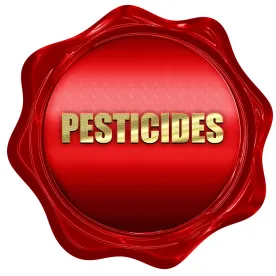On September 19, 2017, California’s Court of Appeal for the First Appellate District reversed a trial court decision denying a petition by the Pesticide Action Network North America (PANNA) challenging the approval by the California Department of Pesticide Regulation (DPR) of amended labeling for two previously registered pesticides containing the active ingredient dinotefuran, a neonicotinoid: Dinotefuran 20SG, manufactured by Mistui Chemicals Agro, Inc.; and Venom Insecticide, manufactured by Valent U.S.A. Corporation. PANNA’s petition alleged that DPR “violated the California Environmental Quality Act (CEQA) by approving the label amendments without sufficient environmental review.” The amended labeling for these two neonicotinoid products added some new registered uses and also increased the allowable application rates for certain existing uses.
The court’s construction of CEQA was a critical element in its decision. Since the DPR regulatory program has been certified pursuant to CEQA, the court agreed that DPR can utilize its standard program documents for pesticide registration actions in lieu of the documents typically prepared under CEQA. The court disagreed, however, with DPR’s assertion that “its regulatory program ‘is exempt from the substantive portions of CEQA.’” The court found the DPR’s record supporting the dinoteferan registration actions to be deficient because DPR could not demonstrate that it properly considered certain factors specified in CEQA. In essence, the court concluded that certain CEQA requirements that DPR construed as procedural in nature were actually substantive standards that DPR must meet and adequately document in its administrative record.
The court’s analysis of the two registration approvals focused on the potential effect of these actions on honeybees. The court found that the administrative record compiled by DPR did not demonstrate that DPR meaningfully addressed potential alternatives to the registration amendments, and that DPR must consider alternatives even when it makes a finding that approved changes would have no significant environmental impact. The court also found that DPR did not demonstrate that it properly assessed the “baseline” existing conditions prior to approval of the amendments, or the cumulative effects of these existing conditions and the new actions on honeybees. The court additionally found that DPR should have recirculated its decision for further comment because the explanation of its decision was inadequate to allow meaningful public comment. The court stated that “in light of the Department’s pending neonicotinoid reevaluation, its initial public reports for Venom Insecticide and Dinotefuran 20SG were both so inadequate and conclusory that public comment on the draft was effectively meaningless.” Based on all of these factors, the court remanded the matter to the trial court with instructions to direct DPR to rescind the two approvals.
Commentary
That the court focused the basis for its decision on its finding that DPR failed to compile a record adequate to show that it met the substantive standards for decision established by CEQA is of concern to many industry stakeholders. The court stated it was “perplexed” by how DPR could determine that the label amendments to allow new uses and use rates would have no significant impact on honeybees, when DPR is still engaged in a reevaluation of the effect of all neonicotinoid pesticides on pollinators. In particular, the court was not persuaded that DPR made any meaningful evaluation of cumulative impacts because DPR only observed in “conclusory fashion” that “the uses are already present on the labels of a number of currently registered neonicotinoid containing products.” This finding is of significant concern to registrants and will be monitored closely.



 />i
/>i

